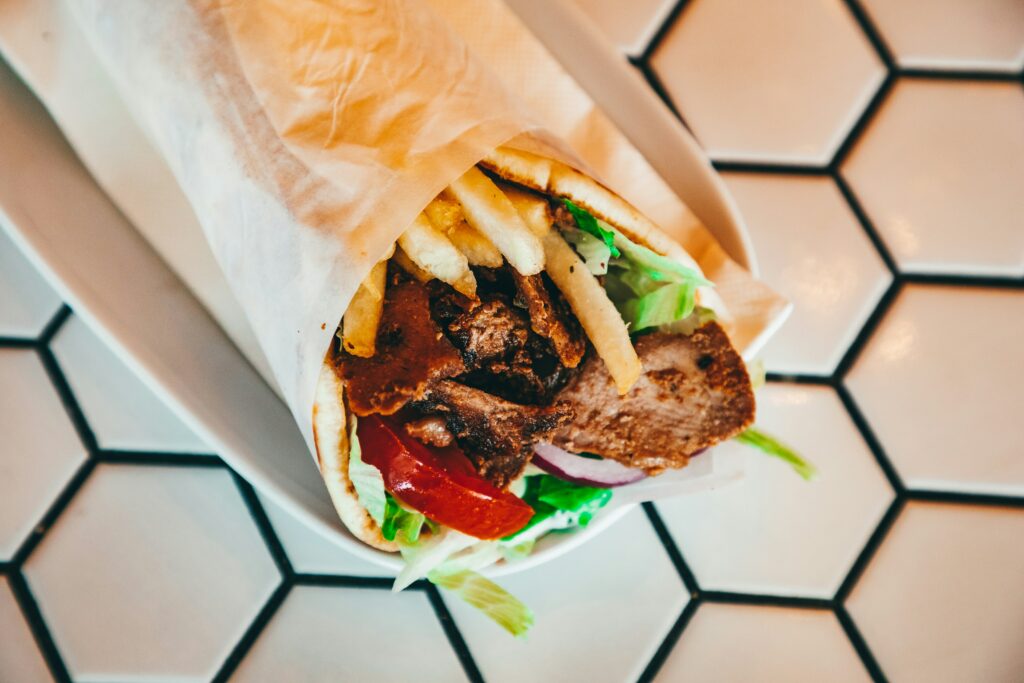A Food Fun Travel Guest Post
Europe’s culinary landscape is as diverse as its cultural heritage, offering an array of flavors, techniques, and traditions that reflect the rich tapestry of its history. From the Mediterranean’s sun-drenched coasts to the hearty fare of the northern climes, exploring Europe through its food is an adventure in taste, tradition, and discovery. This journey across the continent reveals not just the diversity of European cuisine but the stories and people behind these flavors that have been shaped by centuries of exploration, conquest, trade, and innovation.
Prague: Bohemian Delights

Prague, the heart of Bohemia, presents a culinary scene steeped in history and tradition. The city’s cobblestone streets and medieval architecture provide a backdrop to a gastronomic adventure that is deeply rooted in the Czech Republic’s rich cultural tapestry. Traditional dishes like Goulash, a hearty stew made with tender beef and aromatic spices, and Svíčková, marinated beef served with a creamy vegetable sauce, reflect the Czech people’s love for warming, comforting meals. Prague’s beer culture is unparalleled; the city is, after all, the birthplace of Pilsner. Sampling a crisp, refreshing beer in one of Prague’s historic beer halls is not just a taste of local produce but an immersion into a social ritual that has brought communities together for centuries. The Prague to Vienna train conveniently connects these culinary capitals, making it easy for travelers to immerse themselves in the rich tapestry of flavors that define Central Europe. Together, Vienna and Prague offer a journey through the diverse flavors of Europe, where each meal and each sip tell a story of history, culture, and the joy of shared experiences.
Vienna: A Waltz of Flavors
Vienna, Austria’s majestic capital, offers a culinary experience as rich and varied as its musical heritage. The city’s cafes and coffee houses are not just places to dine; they are cultural institutions, embodying the Viennese charm and sophistication. Here, one can savor the world-renowned Sachertorte, a dense chocolate cake with a layer of apricot jam, emblematic of Vienna’s culinary prowess. Beyond sweets, the traditional Wiener Schnitzel, a tender veal cutlet breaded and fried to perfection, tells of the city’s love affair with comfort food. Vienna’s vineyards, nestled within the city limits, offer an urban wine-tasting experience unique to the capital, marrying the city’s historical love for music and art with its equally enduring appreciation for fine wine and hearty cuisine. The train from Vienna to Prague facilitates a journey between these two capitals, enabling travelers to effortlessly transition from the coffee culture of Vienna to the beer halls of Prague, enriching their culinary voyage through Central Europe.
Mediterranean Marvels: Italy, Spain, and Greece
The Mediterranean region is renowned for its fresh, flavorful ingredients and age-old cooking traditions. Italy’s cuisine is celebrated worldwide, with its pasta dishes, regional specialties like Neapolitan pizza, and rich desserts like Tiramisu. Each region boasts its own unique flavors, from the truffles of Piedmont to the spicy ‘nduja of Calabria.
Spain offers a culinary journey from the tapas bars of Seville to the seafood of Galicia. The country’s diverse climates contribute to a wide range of ingredients, making each meal an exploration of local flavors. Paella, a symbol of Spanish cuisine, varies from region to region, each with its own interpretation of this beloved dish.

Greece’s culinary traditions are rooted in the use of fresh vegetables, olive oil, and grains, with dishes like Moussaka and Souvlaki being worldwide favorites. The Greek islands offer seafood delicacies, while the mainland presents a variety of meats and pies, showcasing the simplicity and richness of Greek cuisine.
The Flavors of France and Belgium
French cuisine is synonymous with gastronomic excellence. From the wine regions of Bordeaux and Champagne to the cheese-producing areas of Normandy and Burgundy, France offers a palette of flavors that has influenced global culinary practices. Iconic dishes such as Coq au Vin, Bouillabaisse, and Ratatouille speak to the country’s regional diversity and culinary sophistication.
Belgium, often overlooked, is a treasure trove of culinary delights. Known for its chocolates, waffles, and beer, Belgium’s culinary scene is a blend of tradition and innovation. Flemish stew, Belgian fries, and a variety of mussel dishes reflect the country’s love for hearty, comforting food.
Central European Delights: Germany and Hungary
Germany’s cuisine is characterized by hearty dishes meant to sustain through cold winters. Pork, potatoes, and cabbage feature prominently, with dishes like Sauerkraut, Bratwurst, and Schnitzel being staples. The tradition of beer brewing adds another layer to the country’s culinary identity, with each region boasting its own specialty.
Hungary is famous for its Paprika, a spice that defines the nation’s cuisine. Hungarian Goulash, a rich stew of meat and vegetables seasoned with paprika, is a testament to the country’s love for warm, flavorful dishes. Other specialties include Paprikash and Langos, showcasing the depth of Hungarian flavors.
Scandinavian Simplicity: Sweden, Denmark, and Norway
Scandinavian cuisine is a study in simplicity and sustainability, focusing on fresh, locally sourced ingredients. Sweden’s Smörgåsbord, a buffet of cold and hot dishes, reflects the country’s culinary diversity. Denmark, with its New Nordic Cuisine, emphasizes innovation in dishes like Smørrebrød and seasonal foraged ingredients.
Norway’s coastal location influences its cuisine, with seafood taking center stage. Traditional dishes like Rakfisk (fermented fish) and Kjøttkaker (meatballs) highlight the Norwegians’ connection to both land and sea, offering a taste of the country’s rich culinary heritage.
Conclusion: A Feast of Cultures
Exploring Europe through its culinary traditions offers a unique lens into the continent’s history, culture, and people. Each country’s cuisine tells a story of its past, its landscape, and its traditions, offering travelers a taste of Europe’s soul. From the olive groves of Greece to the vineyards of France, and from the hearty fare of Germany to the innovative dishes of Scandinavia, Europe’s culinary landscape is a testament to the diversity and richness of its cultural heritage. Culinary exploration in Europe is not just about enjoying delicious meals; it’s about experiencing the stories, traditions, and people that make European cuisine so unique and beloved around the world.




